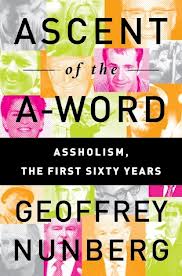Author: cristimezdrea
More about antisocial behavior

Anonymity and Antisocial Behavior
What makes people be such jerks in online games and messageboards? And why do these kids keep stealing my Halloween candy? Wait, actually I think I remember reading something about this… Continue reading

The Weird Weaponized Animals of WWII
The escalation of World War II brought with it an arms race of epic proportions, with each side racing to develop various weapons technologies with which to more efficiently kill each other. This time of frantic weapons research brought about some of the most deadly weapons the world had ever seen, the atomic bomb perhaps being the most notable. Yet it seems that the human capacity for imagination knows no bounds, including in the realm of weapons of war.
While some engineers were designing newer and deadlier aircraft, bombs, missiles, or other mechanical means of devastation, still others worked in the shadows of secret labs perfecting ways to turn animals into weapons. The results, while by no means always successful, were some of the most bizarre attempts at weapons of war ever devised. Here we will look at some of the creative ways in which human beings attempted to harness animals for the purpose of waging war during the Second World War. Continue reading

The role of genes & how they are influenced by our social life
video:
If you’ve bought into the simplified notion that genes are top-down bosses, issuing marching orders that your cells, body and brain merely obey, it’s time to rethink. Steve Cole first came to national attention with studies showing that HIV-positive gay men had lower survival rates if they were closeted. The real kicker: social stresses were depressing the mens’ viral resistance by affecting their genes. No, not the sequence of genes but their regulation – which genes are switched on and how much. In the succeeding years, Cole and fellow researchers have assembled an increasingly detailed portrait of our socially and psychologically responsive genome. Though scientists have long known that external inputs play a role in gene expression, the degree to which large numbers of genes are influenced on a moment-to-moment basis by our experiences – including our social life, our feelings and perceptions – is an important developing story.

How your brain edits image
Vision scientists at UC Berkeley and MIT have discovered an upside to the brain mechanism that can blind us to subtle visual changes in the movies and in the real world.

Continuity bloopers happen in lots of movies, and we rarely catch them. Scientists explain why that’s a good thing
Ascent of the A-Word: Assholism, the First Sixty Years
 It first surfaced in the gripes of GIs during World War II and was captured early on by the typewriter of a young Norman Mailer. Within a generation it had become a basic notion of our everyday mo
It first surfaced in the gripes of GIs during World War II and was captured early on by the typewriter of a young Norman Mailer. Within a generation it had become a basic notion of our everyday mo
ral life, replacing older reproaches like lout and heel with a single inclusive category––a staple of country outlaw songs, Neil Simon plays, and Woody Allen movies. Feminists made it t
heir stock rebuke for male insensitivity, the est movement used it for those who didn’t “get it,” and Dirty Harry applied it evenhandedly to both his officious superiors and the punks he manhandled. Continue reading
Planetwalker: 22 Years of Walking. 17 Years of Silence.
 When the struggle to save oil-soaked birds and restore blackened beaches left him feeling frustrated and helpless, John Francis decided to take a more fundamental and personal stand—he stopped using all forms of motorized transportation. Soon after embarking on this quest that would span two decades and two continents, he took a vow of silence that endured for 17 years. It began as a silent environmental protest, but as a young African-American man, walking across the country in the early 1970s, his idea of “the environment” expanded beyond concern about pollution and loss of habitat to include how we humans treat each other and how we can better communicate and work together to benefit the earth. Continue reading
When the struggle to save oil-soaked birds and restore blackened beaches left him feeling frustrated and helpless, John Francis decided to take a more fundamental and personal stand—he stopped using all forms of motorized transportation. Soon after embarking on this quest that would span two decades and two continents, he took a vow of silence that endured for 17 years. It began as a silent environmental protest, but as a young African-American man, walking across the country in the early 1970s, his idea of “the environment” expanded beyond concern about pollution and loss of habitat to include how we humans treat each other and how we can better communicate and work together to benefit the earth. Continue reading
Random reward conditioning

If slot machines delivered $1 every time you inserted 50 la6icents, you might use them, but you’d never get addicted.
An urban myth popular in US universities concerns a group of psychology students who decide to play a trick on their lecturer. They conspire among themselves to nod, smile and express passionate interest whenever he’s standing at one side of the podium, or whenever he raises his arms to gesture; the rest of the time, they look distracted and bored. By the end of term, he’s spending every lecture teetering precariously at the podium’s edge, his arms floating foolishly far above his head. He has fallen victim to good, old-fashioned “operant conditioning” – the rewards-based system of behaviour change pioneered in rats by BF Skinner. Continue reading